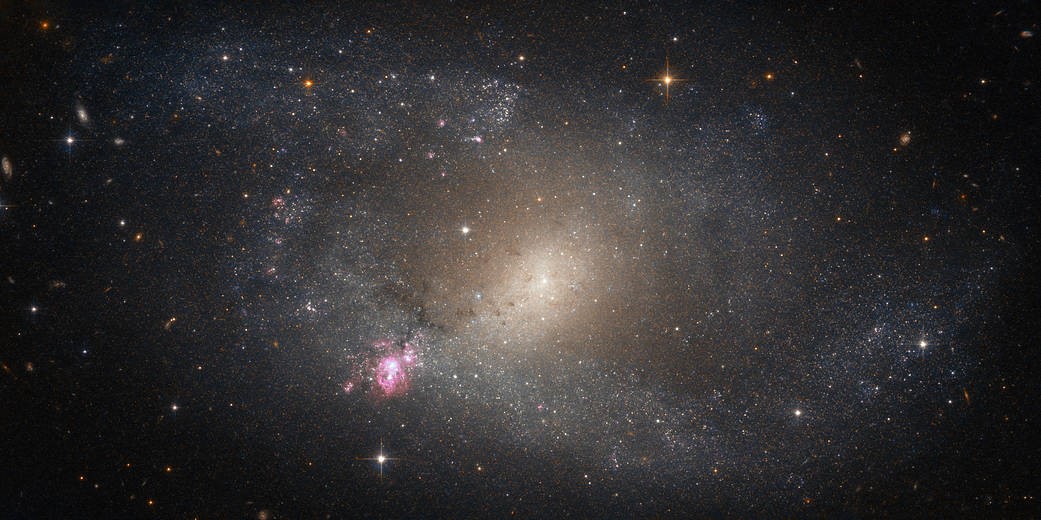
Launched on April 24th, 1990, the Hubble Space Telescope is the first major optical telescope that was ever placed in space and has been helping scientists observe our universe for over twenty-five years! Since its launch, the telescope has made 1.3 million observations, assisted through its collected data with the publishing of over fifteen thousand scientific papers, and has traveled in its low Earth orbit for over 4 billion miles!
The Hubble Space Telescope has captured a particularly interesting image as of late. NGC 5398 is a barred spiral galaxy about 55 million light-years away known for an extensive HII region. An HII region, called Tol 89 in NGC 5398’s case, is a cloud made up of ionized hydrogen. The picture taken clearly shows the appearance of “starbursts” (what is seen after bursts of star-forming activity occurs) in Tol 89, which resides in the lower left end of NGC 5398’s bar. Astronomers have named the two brightest areas of Tol 89 “A” and “B,” and star-forming activity seems to have occurred about 4 million and less than 3 million years ago respectively. Even more fascinating, Tol 89-A is hypothesized to have several Wolf-Rayet stars, rare stars with temperatures hotter than most stars and very strong stellar winds.
For over twenty-five years, the Hubble Space Telescope has continued to bring new insights and data to astronomers. It is heartening and exciting to know that more years of interesting discoveries are coming to us! #GetExcitedSU
nasa.gov/mission_pages/hubble/story/index.html
nasa.gov/image-feature/goddard/2017/hubble-catches-starbursts-in-a-barred-spiral-galaxy
